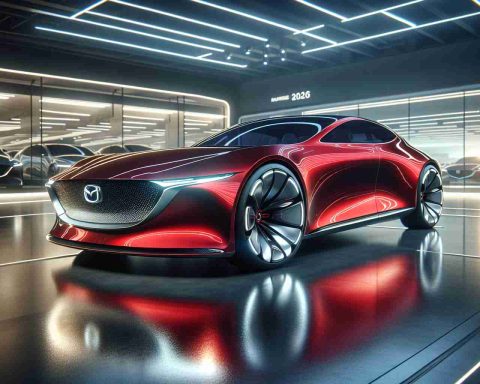- Sustainable mobility is transforming urban transit in response to pollution and noise from car engines.
- Cities like Amsterdam and Copenhagen lead by integrating extensive bicycle networks to reduce traffic congestion and emissions.
- The TransMilenio bus system in Bogotá showcases efficient public transit, reducing commute times and emissions.
- Electric buses and scooters are pivotal, offering eco-friendly alternatives and lowering urban air pollution.
- Investing in infrastructure for sustainable mobility requires vision and cultural adaptation.
- Individuals contribute by choosing bikes, supporting public transit improvements, and adopting green transport options.
- Sustainable transit fosters cleaner, quieter, and more livable urban environments.
- This movement redefines urban life, prioritizing livability and environmental innovation.
In bustling cities worldwide, the roar of car engines often drowns the delicate symphony of everyday life. As urban populations swell, this cacophony, along with its accompanying pollution, has sparked a movement towards sustainable mobility, transforming how people move, live, and breathe.
Picture a vibrant metropolis not as a chaotic maze of honking cars, but as a serene landscape where bicycles glide smoothly over dedicated lanes and electric buses whisper quietly along their routes. This isn’t a scene from a distant utopia; it’s becoming reality in progressive cities committed to sustainability.
Cities like Amsterdam and Copenhagen lead the charge, offering a glimpse of the potential for urban spaces to harmonize with nature. Here, bicycles outnumber cars. Dedicated bike lanes network through the city, inviting riders to embrace pedal power. These changes carve traffic congestion and carbon emissions down significantly.
Meanwhile, in cities like Bogotá, Colombia, the TransMilenio bus rapid transit system exemplifies efficiency, reducing commute times and curbing emissions. Electric buses, already replacing diesel fleets in several cities, bolster this green wave by significantly lowering urban air pollution.
The rise of electric scooters presents another revolutionary shift in personal mobility. They zip effortlessly along sidewalks, providing a convenient and eco-friendly alternative to short car trips. Their popularity expands daily as more people recognize the convenience and environmental benefits.
The transition isn’t without challenges. Building extensive infrastructure requires investment, vision, and sometimes, a cultural shift. Yet, therein lies the power of sustainable mobility: it’s not merely a pivot in transportation; it’s a societal transformation.
Individuals play a pivotal role: choosing a bike over a car, advocating for public transit improvements, and embracing greener alternatives. Each conscious choice contributes to a collective impact.
The takeaway? Sustainable mobility isn’t just about reducing emissions; it’s about redefining urban life. Cities that prioritize green transit become cleaner, quieter, and more livable. Ultimately, fostering this evolution promises a future where cities aren’t just places to survive, but places to thrive.
With every pedal, every fare on an electric bus, and each scooter ride, we’re crafting cities that pulse with the heartbeat of sustainable innovation. Welcome to the future of urban transit—it’s not just on the horizon; it’s in motion.
Transforming Urban Landscapes: The Rise of Sustainable Mobility
Overview: What is Sustainable Mobility?
Sustainable mobility refers to the adoption of transportation methods that minimize environmental impact, enhance urban livability, and ensure efficient movement across a city. This encompasses a broad range of solutions, including public transit systems, biking, walking, and the use of electric vehicles.
Real-World Use Cases
1. Copenhagen and Amsterdam: Cycling Paradises
These cities are often cited as pioneers in integrating cycling into daily life. Approximately 49% of all trips in Copenhagen are made by bike, according to the city’s cycling statistics. Features that support this include:
– Dedicated Bike Lanes: Ensuring safety and accessibility for cyclists.
– Traffic Light Systems: Optimized for bike traffic.
– Biking Infrastructure: Secure parking facilities and rental services.
2. Bogotá’s TransMilenio: A Model for Efficient Transit
Bogotá’s TransMilenio is a Bus Rapid Transit (BRT) system designed to deliver high-capacity service with dedicated lanes and priority at intersections. Key benefits include:
– Increased Speed: BRT buses operate faster than traditional buses due to dedicated lanes.
– Cost-Effective: Less expensive than building a full subway system.
– Positive Environmental Impact: Reduced carbon emissions due to efficient bus operations.
3. Rise of Electric Scooters
Cities around the world are integrating electric scooters as an alternative to traditional transportation methods, offering:
– Convenience for Short Trips: Electric scooters are perfect for “last mile” connectivity, filling gaps in other forms of public transport.
– Reduced Carbon Footprint: Electric scooters emit significantly less pollution compared to gasoline-powered vehicles.
Industry Trends and Market Forecasts
According to a report by Allied Market Research, the global electric scooter market size was valued at $18.6 billion in 2019 and is projected to reach $41.9 billion by 2030, growing at a CAGR of 7.4%. This growth is driven by urbanization, advancements in electric vehicle technologies, and government initiatives supporting green mobility.
Challenges and Limitations
Despite the promise of sustainable mobility, challenges remain:
– Infrastructure Investments: Developing extensive networks of bike lanes and upgrading public transit systems require significant investments and political will.
– Cultural Shifts: Encouraging a shift from car-centric mindsets to more sustainable options can be difficult.
– Regulatory and Safety Concerns: Electric scooters and bikes require regulations to ensure rider safety and proper usage.
Pros & Cons Overview
Pros:
– Environmental Benefits: Reduced emissions contribute to a healthier urban environment.
– Cost Savings: Less reliance on costly fuel and maintenance associated with cars.
– Health Improvements: Cycling and walking can improve individual health.
Cons:
– Weather Dependency: Some modes, like cycling and scooters, can be less appealing in adverse weather.
– Accessibility Issues: Not all areas are equally accessible by bikes or scooters.
– Risk of Injury: Increased use of bikes and scooters comes with higher risk of accidents without proper infrastructure.
Actionable Recommendations
– Advocate for Local Initiatives: Support policies and projects aimed at expanding and improving sustainable mobility infrastructure in your area.
– Utilize Public Transit: Choose public transportation options whenever possible to reduce carbon footprint.
– Embrace Micro-Mobility: Consider integrating electric scooters or bikes for short commutes to decrease reliance on cars.
Conclusion
Sustainable mobility is more than a trend; it’s an essential part of creating livable cities of the future. With benefits ranging from environmental preservation to enhanced public health, the movement towards greener transportation is undeniable. For more information on how to integrate sustainable practices into your daily commute, consider exploring resources available on sites like the United Nations where global efforts and best practices are shared. Engage in this urban transformation and contribute to a better, more sustainable world.

















